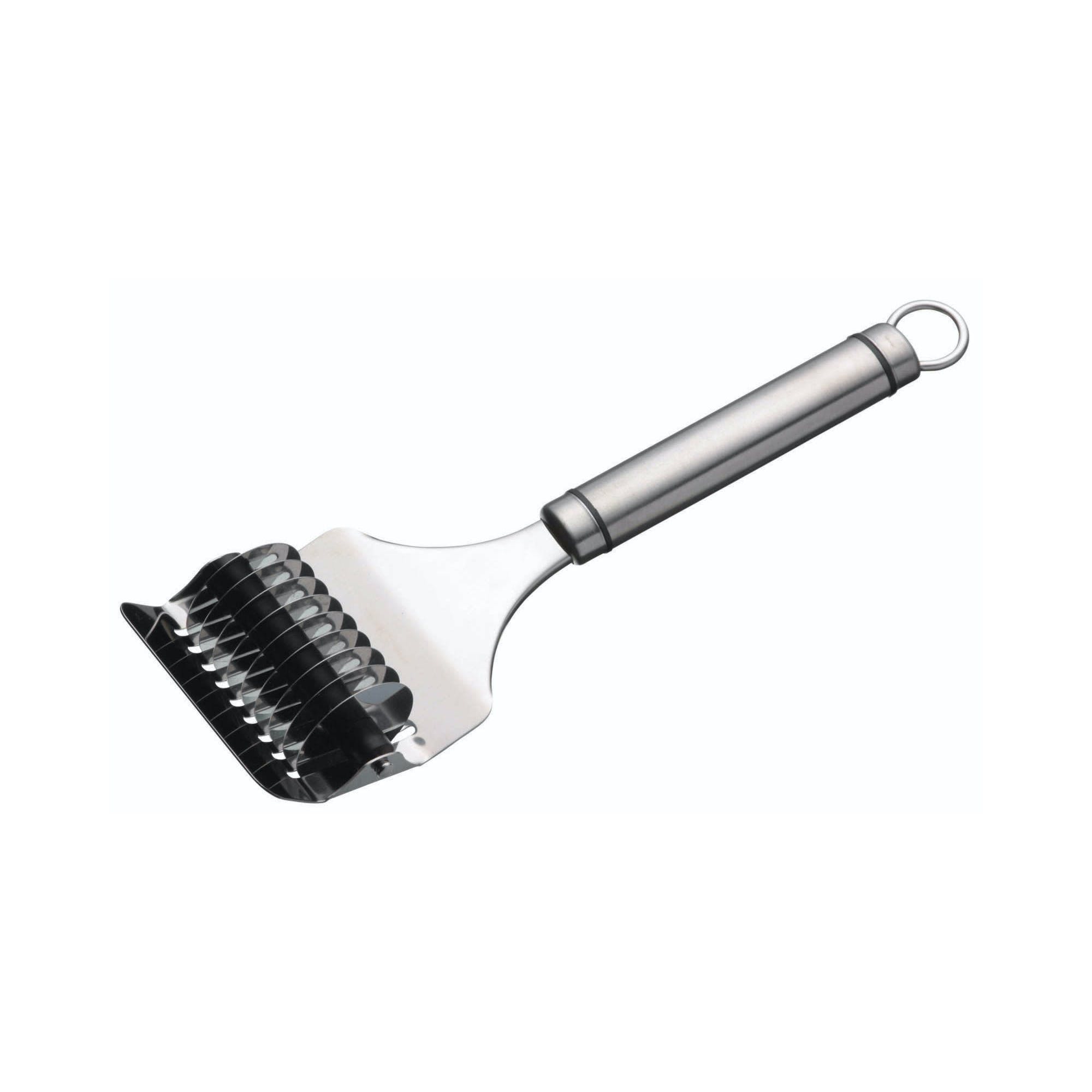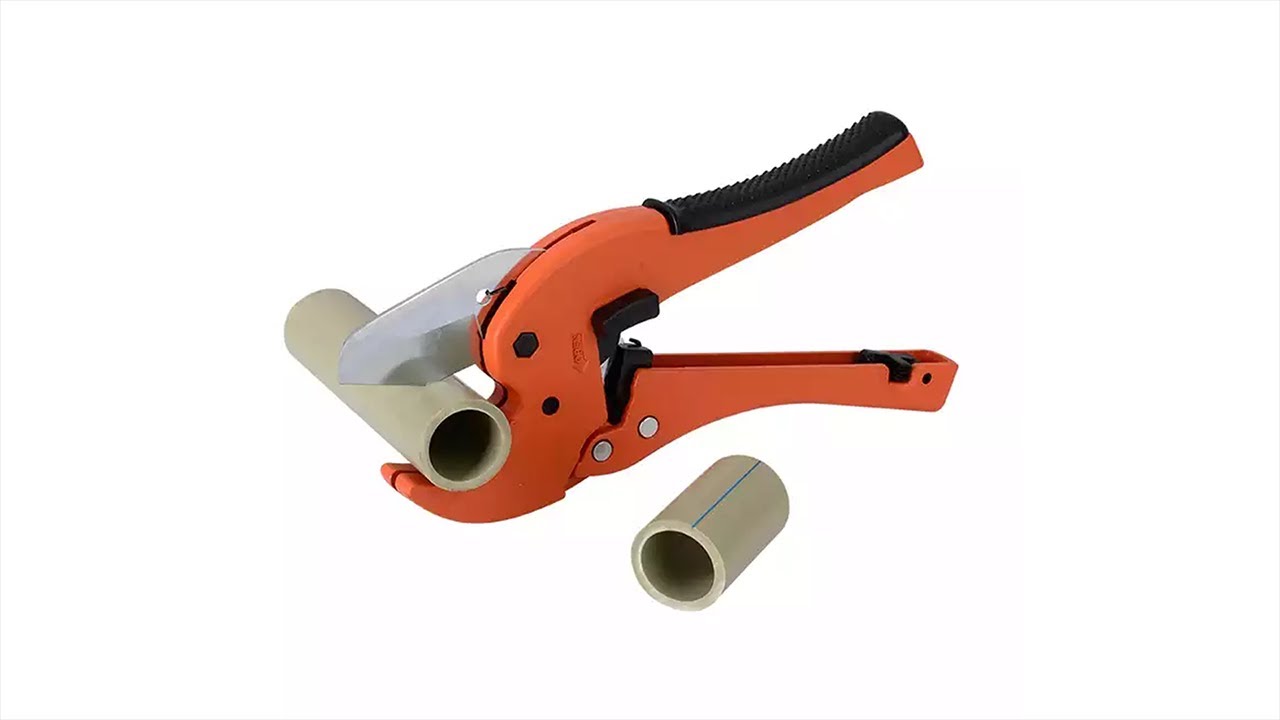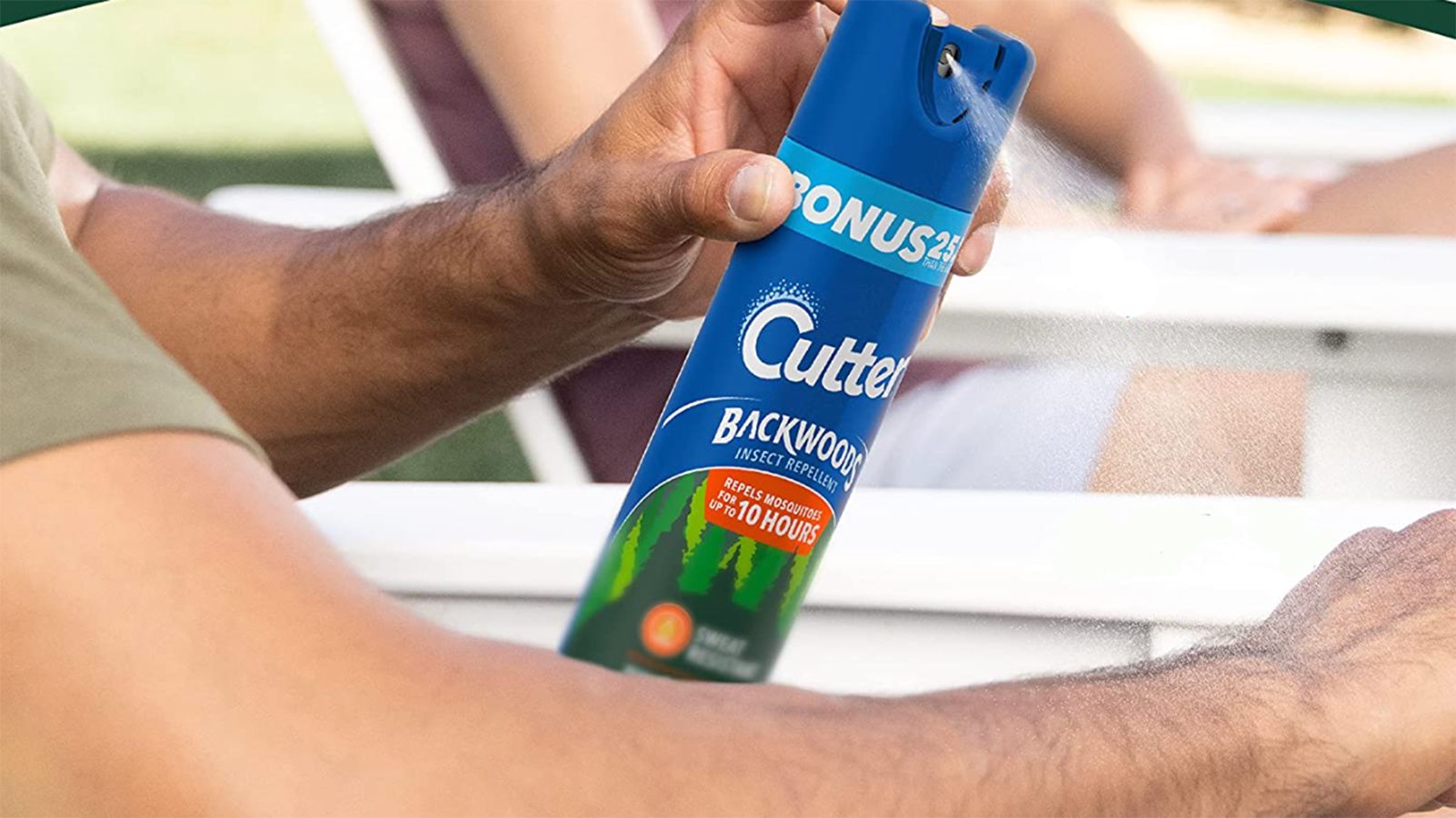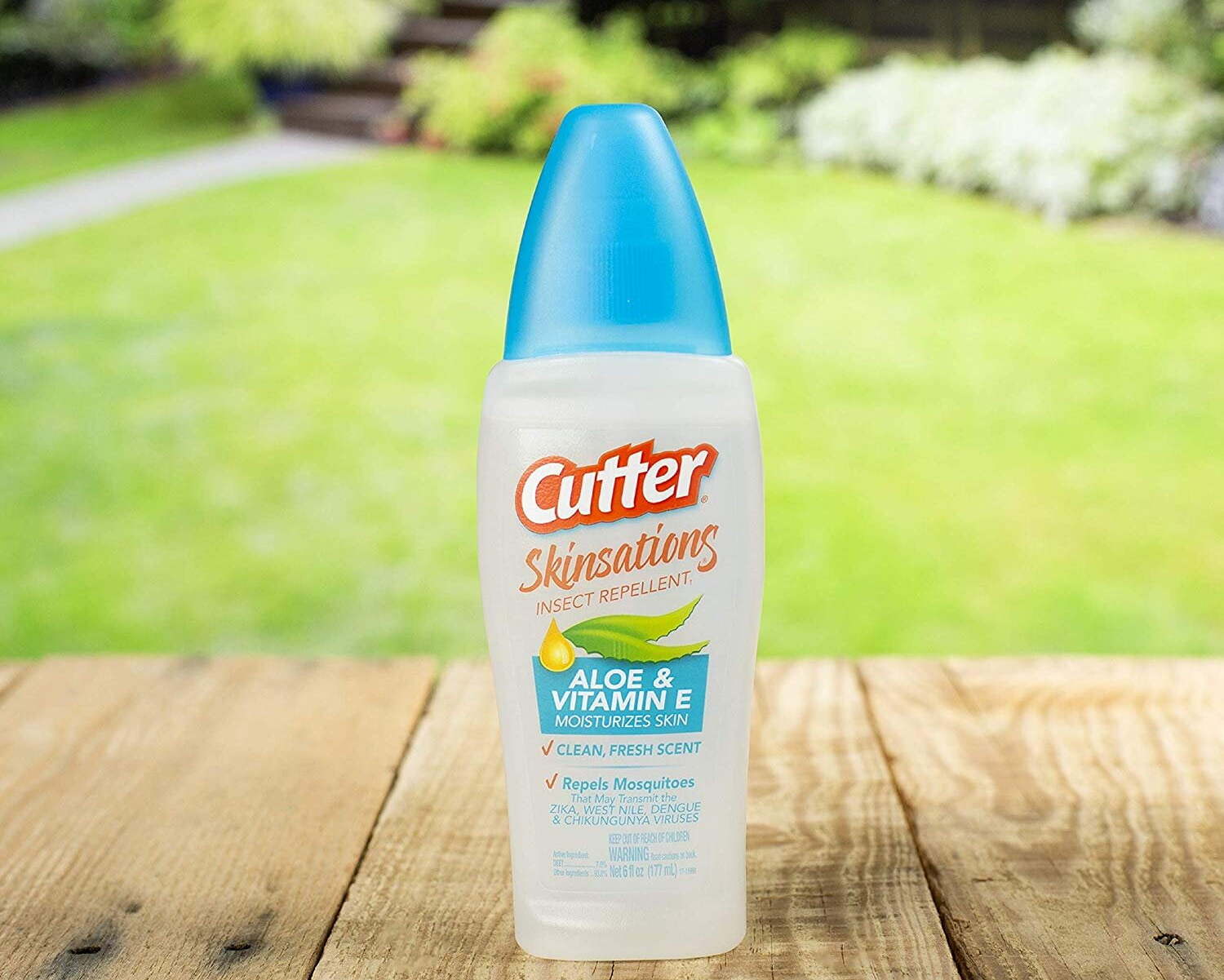Home>Gardening News and Trends>When To Spray Cutter Backyard Bug Control
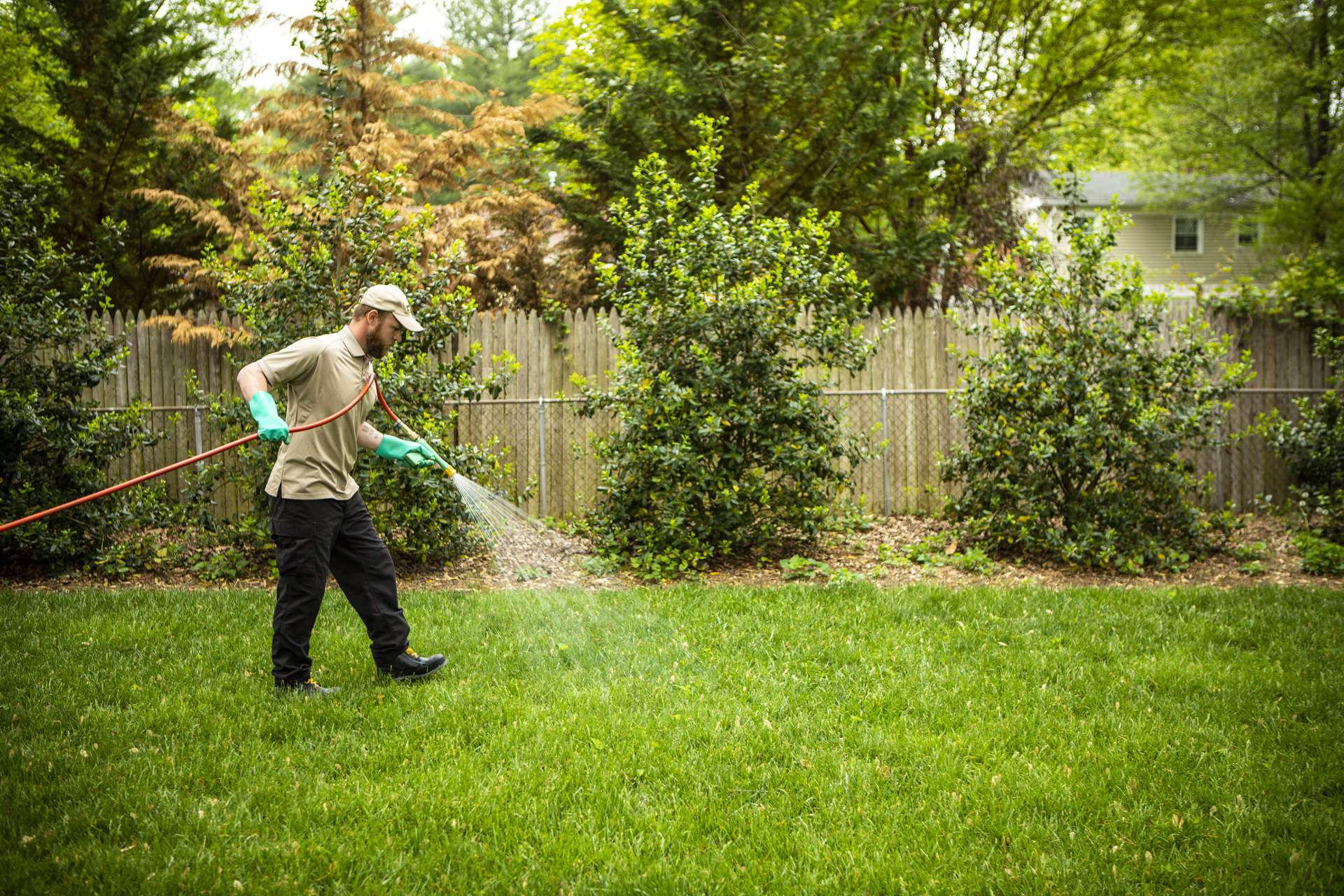

Gardening News and Trends
When To Spray Cutter Backyard Bug Control
Modified: January 22, 2024
Discover the latest news on when to spray Cutter Backyard Bug Control. Get expert advice on effective pest control methods to keep your backyard bug-free.
(Many of the links in this article redirect to a specific reviewed product. Your purchase of these products through affiliate links helps to generate commission for Chicagolandgardening.com, at no extra cost. Learn more)
Table of Contents
Introduction
Welcome to our comprehensive guide on when to spray Cutter Backyard Bug Control. As the warm weather arrives, so do the pesky insects that can turn your outdoor activities into a nightmare. Whether you’re planning a barbeque, gardening, or just enjoying a peaceful evening in your backyard, dealing with annoying bugs can quickly ruin the experience.
Fortunately, Cutter Backyard Bug Control offers a reliable solution to keep those bugs at bay. This insecticide is specially formulated to control a wide range of pests, including mosquitoes, flies, gnats, and other annoying insects that can disrupt your outdoor enjoyment.
Knowing when and how to use Cutter Backyard Bug Control effectively is crucial to maximize its effectiveness and ensure a bug-free environment. In this guide, we will provide you with the information you need to make informed decisions and achieve optimal results.
Before we dive into the details, it’s important to note that Cutter Backyard Bug Control contains active ingredients that are safe for humans and pets when used as directed. However, it’s always essential to follow the instructions and take necessary precautions to protect yourself and your loved ones during application.
Now, let’s explore the factors to consider when deciding the right time to spray Cutter Backyard Bug Control.
Understanding Cutter Backyard Bug Control
Cutter Backyard Bug Control is a powerful insecticide that effectively eliminates and repels a wide range of outdoor pests. It comes in a convenient spray bottle, making it easy to apply to your outdoor spaces such as your backyard, patio, or garden. The formulation of Cutter Backyard Bug Control is designed to target and control common insects, including mosquitoes, flies, gnats, ants, and other bothersome pests.
The active ingredient in Cutter Backyard Bug Control is typically a pyrethroid insecticide like Permethrin. Pyrethroids are synthetic chemicals that mimic the insecticidal properties of naturally occurring pyrethrins, which are derived from chrysanthemum flowers. These insecticides work by disrupting the nervous system of insects, leading to paralysis and eventually death.
Cutter Backyard Bug Control offers a long-lasting residual effect, meaning it continues to provide protection against pests for an extended period. This makes it an ideal choice for creating a bug-free zone in your outdoor areas.
It’s important to note that while Cutter Backyard Bug Control is effective against a wide range of insects, it is not harmful to humans and pets when used as directed. However, it’s always a good practice to minimize direct contact with the spray and allow it to dry completely before reentering the treated area.
Understanding the features and benefits of Cutter Backyard Bug Control is essential to ensure its proper usage and maximize its effectiveness in creating a bug-free outdoor environment.
Factors to Consider
Before spraying Cutter Backyard Bug Control, there are several important factors to consider to ensure that you achieve the best results and create a bug-free outdoor environment. These factors include the insect activity levels, ideal weather conditions, time of day for application, and signs of infestation. Let’s dive into each of these factors:
- Insect Activity Levels: Understanding the activity levels of the target pests is crucial for effective bug control. Mosquitoes, for example, are most active during dawn and dusk, while flies are more active during the day. By identifying the peak activity times of the pests you’re targeting, you can plan your spraying accordingly.
- Ideal Weather Conditions: Weather plays a significant role in the effectiveness of insecticides. Windy conditions can cause the spray to disperse, reducing its effectiveness, while heavy rains can wash away the product. Ideally, choose a calm day with little to no wind and no rain in the forecast for at least 24 hours after application.
- Time of Day for Application: The best time to spray Cutter Backyard Bug Control is during calm and cooler parts of the day, such as early morning or evening. Avoid spraying during the hottest parts of the day, as the heat may cause the product to evaporate before it can effectively control pests.
- Signs of Infestation: Take note of any signs of insect infestation in your outdoor areas. Look for clusters of mosquitoes, flies, or other pests around stagnant water sources, garbage cans, or vegetation. Identifying areas with a high concentration of pests will help you determine where to focus your spraying efforts.
By considering these factors, you can plan your Cutter Backyard Bug Control application in a way that maximizes its effectiveness in controlling pests and creates a more enjoyable outdoor environment.
Ideal Conditions for Spraying
Choosing the right conditions for spraying Cutter Backyard Bug Control is crucial to ensure optimal results. Here are some factors to consider when determining the ideal conditions for application:
- Temperature: The temperature range for effective insect control is typically between 50°F and 90°F (10°C and 32°C). Avoid spraying during extremely hot or cold weather, as it may impact the product’s effectiveness.
- Wind Speed: It’s important to select a day with minimal wind, as strong winds can disperse the spray and reduce its effectiveness. Ideally, choose a day with wind speeds below 5 mph (8 km/h).
- Humidity: High humidity can cause the product to take longer to dry, potentially reducing its effectiveness. Aim for a humidity level below 60% for optimal results.
- Treatment Area: Before spraying, ensure that the treatment area is clear of debris, toys, and other items that may obstruct the application. Trim any overgrown vegetation that may interfere with the spray or provide shelter to insects.
- Proper Mixing: Follow the instructions on the Cutter Backyard Bug Control label to properly mix the product. Use the recommended ratio of concentrate to water for effective insect control.
By taking these factors into consideration, you can create the ideal conditions for spraying Cutter Backyard Bug Control and maximize its effectiveness in controlling outdoor pests.
Appropriate Insect Activity Levels
Identifying the appropriate insect activity levels is crucial when determining the best time to spray Cutter Backyard Bug Control. Understanding the behavior of the pests you are targeting will help you achieve the most effective results. Here are some guidelines to consider:
- Mosquitoes: Mosquitoes are most active at dawn and dusk when they are searching for blood meals. These are the ideal times to apply Cutter Backyard Bug Control for mosquito control. Additionally, consider spraying targeted areas where mosquitoes tend to breed, such as stagnant water sources or dense vegetation.
- Flies and Gnats: Flies and gnats are generally more active during the day. Focus on applying Cutter Backyard Bug Control during daylight hours for optimal control. Pay attention to areas where flies and gnats congregate, such as garbage cans, compost piles, or areas with decaying organic matter.
- Ants and Other Crawling Insects: Crawling insects like ants are active throughout the day, so you have more flexibility in timing your application. However, it’s best to treat ant trails and entry points when they are most active, typically during the morning or late afternoon.
By targeting the appropriate insect activity levels, you can maximize the effectiveness of Cutter Backyard Bug Control in reducing the population of pests and creating a more enjoyable outdoor environment.
Weather Guidelines
Choosing the right weather conditions for spraying Cutter Backyard Bug Control is essential to ensure its effectiveness. Here are some weather guidelines to consider:
- Wind: Avoid spraying Cutter Backyard Bug Control on windy days. Strong winds can cause the spray to drift, reducing its effectiveness and potentially harming beneficial insects. Choose a day with light or no wind, ideally below 5 mph (8 km/h).
- Rain: Do not spray Cutter Backyard Bug Control if rain is expected within 24 hours. Rain can wash away the product, reducing its efficacy. Make sure to check the weather forecast and choose a day without rain in the immediate forecast.
- Temperature: The ideal temperature range for spraying Cutter Backyard Bug Control is typically between 50°F and 90°F (10°C and 32°C). Avoid spraying during extremely hot or cold weather, as it may affect the product’s performance.
- Humidity: High humidity can influence the drying time of the product. Aim for a humidity level below 60% for optimal results. If the humidity is too high, consider spraying early in the morning or later in the evening when the humidity is generally lower.
Remember to check the weather conditions before applying Cutter Backyard Bug Control. Planning your application on a suitable day will increase the effectiveness of the product and help you achieve the desired results.
Time of Day for Application
The time of day for applying Cutter Backyard Bug Control can significantly impact its effectiveness. Choosing the right time ensures maximum control of pests in your outdoor areas. Here are some guidelines to consider:
- Early Morning or Evening: The best time to apply Cutter Backyard Bug Control is during the early morning or evening when the temperature is cooler. These times of the day are generally calmer, with less wind and decreased insect activity. Additionally, mosquitoes, which are a common target for bug control, are most active during dawn and dusk, making these times ideal for treating them.
- Avoid Midday Heat: It’s important to avoid spraying Cutter Backyard Bug Control during the hottest parts of the day. High temperatures can cause the product to evaporate quickly, reducing its effectiveness. If you must apply the insecticide during the day, opt for a time when the temperature is relatively cooler, such as late morning or early afternoon.
- Prioritize Cool and Calm Days: Choose days when the weather is generally cooler and wind speeds are low. Applying the product during calm conditions minimizes the risk of the spray being blown away and ensures better coverage of the target areas. It’s also advisable to avoid rainy days or days with high humidity, as they can affect the product’s performance.
By timing your application of Cutter Backyard Bug Control during the appropriate periods, you can maximize its efficacy and create a more pleasant outdoor environment free from bothersome pests.
Signs of Infestation
Recognizing the signs of insect infestation is crucial when determining the need to spray Cutter Backyard Bug Control. By identifying areas or specific pests that require treatment, you can effectively target the source of the problem. Here are some signs of infestation to watch out for:
- Clusters of Mosquitoes or Flies: An abundance of mosquitoes or flies in specific areas, such as around standing water sources or near garbage cans, may indicate an infestation. These pests can be not only annoying but also potential carriers of diseases, so it’s important to address the issue promptly.
- Visible Presence of Nests: Certain insects, such as wasps or hornets, may build nests in or near your outdoor spaces. These nests can be visible and pose a risk to you or your family. If you notice nests or a high level of insect activity around them, it’s crucial to take action to remove the nests and treat the affected areas.
- Plant Damage: Some insects, like aphids or caterpillars, can cause visible damage to your plants. Look for wilting, holes in leaves, or discoloration, as these are signs of potential infestation. Treating the affected plants and the surrounding areas with Cutter Backyard Bug Control can help prevent further damage and ensure the health of your greenery.
- Unusual Pests: If you notice pests that are not typically found in your outdoor environment, it could indicate an infestation. This could include ants swarming in large numbers, termites in your wooden structures, or beetles infesting your lawn. Promptly treating these areas with Cutter Backyard Bug Control can help eliminate the infestation and prevent further damage.
By being vigilant and noticing these signs of infestation, you can take proactive measures by applying Cutter Backyard Bug Control to targeted areas and effectively control the insect population in your outdoor spaces.
Important Safety Precautions
When using Cutter Backyard Bug Control, it is important to prioritize safety to protect yourself, your loved ones, and the environment. Here are some essential safety precautions to follow:
- Read and Follow the Label: Carefully read and follow the instructions provided on the Cutter Backyard Bug Control label. Pay attention to application rates, recommended protective clothing, and any specific precautions or restrictions mentioned.
- Protective Clothing: Wear appropriate protective clothing when applying Cutter Backyard Bug Control. This includes long sleeves, long pants, closed-toe shoes, socks, and gloves. Consider wearing goggles, a hat, and a mask to protect your eyes, face, and respiratory system.
- Avoid Contact with Skin and Eyes: Minimize direct contact with the insecticide, especially on exposed skin and mucous membranes. If accidental contact occurs, rinse the area immediately with plenty of water. If irritation persists, seek medical attention.
- Keep Children and Pets Away: Ensure that children and pets are kept out of the treated area until the spray has dried completely. Follow the recommended re-entry period mentioned on the label to ensure their safety.
- Store Properly: Store Cutter Backyard Bug Control in its original container, tightly sealed, and in a cool, dry place. Keep it out of reach of children and pets to prevent accidental ingestion or exposure.
- Proper Disposal: Dispose of any unused or expired Cutter Backyard Bug Control according to local regulations. Do not pour the insecticide down drains or dispose of it in the trash. Contact your local waste management facility for proper disposal methods.
- Environmental Considerations: Use Cutter Backyard Bug Control responsibly, considering its potential impact on the environment. Avoid spraying near water sources or areas with aquatic life. Be mindful of beneficial insects like bees and butterflies, and avoid direct contact with flowering plants to minimize any potential harm.
By following these important safety precautions, you can ensure the proper and responsible use of Cutter Backyard Bug Control, protecting both yourself and the environment while effectively controlling pests.
Instructions for Application
To achieve the best results when applying Cutter Backyard Bug Control, it is essential to follow the instructions carefully. Here is a step-by-step guide on how to apply the insecticide effectively:
- Preparation: Before starting the application, ensure that the treatment area is clear of any debris, toys, or other obstacles. Trim any overgrown vegetation that may interfere with the spray or provide shelter to insects.
- Mixing: Follow the instructions on the Cutter Backyard Bug Control label to determine the correct mixing ratio. Typically, you will dilute the concentrate with water according to the label’s guidelines. Use a clean and calibrated sprayer or a pump sprayer for accurate application.
- Protective Clothing: Wear protective clothing as recommended on the label, including long sleeves, long pants, closed-toe shoes, socks, gloves, goggles, a hat, and a mask. This will help minimize direct contact with the insecticide and protect you from potential exposure.
- Application: Start spraying Cutter Backyard Bug Control from the furthest point of the treatment area, working your way back towards the exit. Apply an even and thorough coating, covering all surfaces where pests are likely to land or congregate. Pay special attention to shrubs, bushes, trees, and any areas near standing water or potential breeding grounds.
- Timing: Apply Cutter Backyard Bug Control during calm and cooler parts of the day, such as early morning or evening. Avoid spraying during the hottest parts of the day or when rain is expected within 24 hours, as this may impact the effectiveness of the product.
- Drying Time: Allow Cutter Backyard Bug Control to dry completely before allowing children, pets, or anyone to re-enter the treated area. This typically takes around 30 minutes to an hour, but refer to the label for specific drying time recommendations.
- Clean-Up: After application, clean the sprayer thoroughly according to the instructions, ensuring that no residue remains. Properly dispose of any unused or expired product as per local regulations.
Remember to always read and follow the specific instructions provided on the Cutter Backyard Bug Control label for the most accurate and up-to-date information on application.
Conclusion
Knowing when to spray Cutter Backyard Bug Control is essential for effective pest control and creating a bug-free outdoor environment. By considering factors such as insect activity levels, weather conditions, and the signs of infestation, you can determine the best times and areas to apply the insecticide. Following the instructions for application and prioritizing safety precautions will ensure optimal results while protecting yourself, your loved ones, and the environment.
Cutter Backyard Bug Control offers a reliable solution to control a wide range of pests, including mosquitoes, flies, gnats, ants, and more. Understanding its formulation and features allows you to make informed decisions and use the product effectively.
Remember to always read and follow the instructions provided on the Cutter Backyard Bug Control label for specific guidelines and precautions. Properly preparing the treatment area, mixing the product accurately, and using protective clothing are crucial steps in achieving the best outcomes.
By applying Cutter Backyard Bug Control during the appropriate weather conditions, timing it to coincide with high insect activity levels, and recognizing signs of infestation, you can significantly reduce the prevalence of pests in your outdoor spaces.
Creating a bug-free environment not only enhances the enjoyment of your outdoor activities but also helps protect against potential health risks associated with certain insects. With Cutter Backyard Bug Control and the right application techniques, you can reclaim your outdoor space and enjoy a pleasant and pest-free experience.
